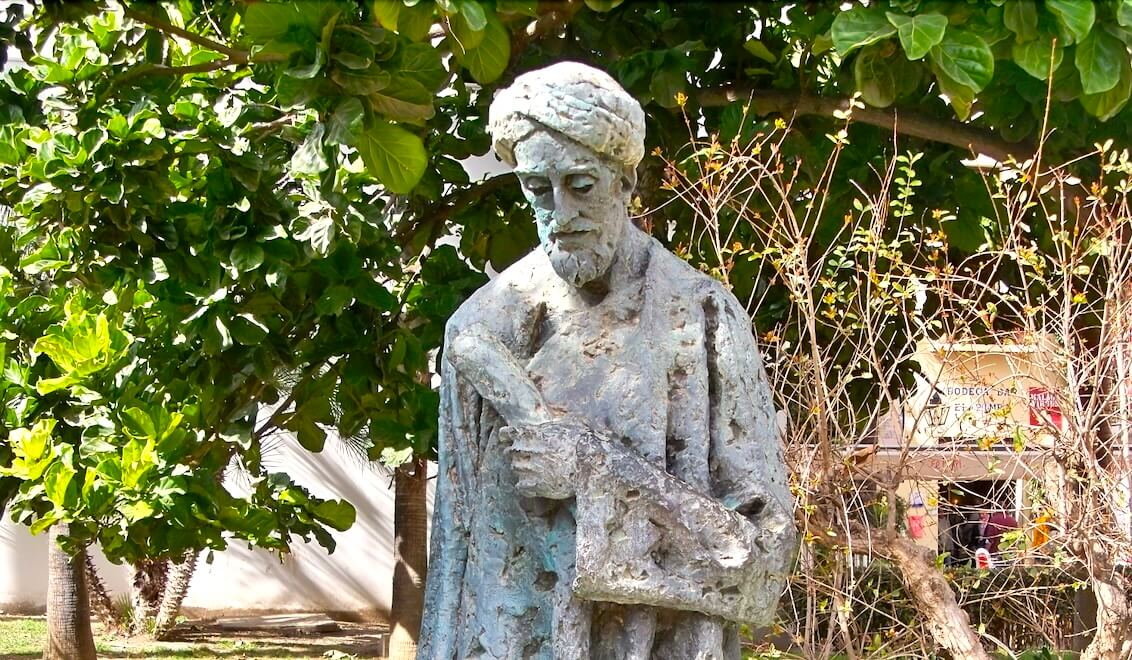How to celebrate Rosh Hashanah while tormented by the pain of others

Image by Getty Images
Our people have not avoided tragedy or chaos. Its rabbinic form was birthed in the crucible of the demolished Temple, crushed uprising, and loss of sovereignty. The Romans killed hundreds of thousands of Jews and sold similar numbers into slavery.
But it was only the beginning. Our great sage, Moses Maimonides once reflected on the “many vicissitudes” of history that swept him from one majority-Muslim realm to another, in search of respite and a place to write his masterworks.
Other Jews survived the bubonic plague in Europe, only to be struck down by conspiracy theorists blaming us for it.
The Crusades winnowed our ranks.
Pogroms reigned eternal in Europe.
The Holocaust decimated our ranks.
Seldom have I felt comfort from a history so riddled with pain and hurt. Until this year.
It’s not that I’m finding comfort in the idea that it could be worse. I cannot summon the strength to do so amid a pandemic that has killed nearly 200,000 Americans, with unprecedented wildfires raging across the west coast and an American south bracing for yet another hurricane. I find no comfort in how bad it once was amid pervasive racism, xenophobia, voter suppression, and a president trying to delegitimize the election. This is the single worst year nationally and globally that I have ever lived through. I could not have imagined at the start of 5780 that it could have been so terrible and terrifying.
And yet, without minimizing the human suffering of this year – of which there is more than I can fathom – the Jewish High Holy Days rise to show that we can engage with our pain and turn some of it into possibility.
For our people does not just have a history of tragedy; we have a remarkable track record of learning from it.
Rosh Hashanah begins this process of coming to terms with our own pain. During a year without the clear demarcation of time, it forces us to distinguish between a spring and summer of agony – and what lies ahead. Once bounded in time, we can look back at the year and see the fullness of its discord. Somehow, separating the year past from the one into which we dive makes the events themselves less fearful, and us more open to the year ahead.
For many, myself included, not knowing what happened is more awful than the realities of what did. And in drawing to an end one chapter, we can come to grips with its fullness, with eyes wide open. We can begin to examine its history and tell its story, trying different narrative arcs to see which one rings true.
The High Holy Days contain within them ample imprints of our own history and mythology, from Abraham to Abraham Ben Ezra and Moses to Moses Maimonides. They are littered with intertextuality, bringing into conversation similar themes from across time and space. With their explicitly ahistorical nature, they help us renew the art of storytelling and give us countless parallels from which to glean insight.
A powerful teaching connected to the Yom Kippur afternoon liturgy of Eleh Ezkarah, “These I remember,” has been most resonant for me. In it, we recount the story of ten martyrs, each tortured to death by the Romans for their role in rebellions against the empire two millennia ago. Rabbi Akiva, perhaps the best known among them, was tortured in front of his students. A fountain of spiritual strength, he is able to pray and remain spiritually grounded to his very last breath. His students, by contrast, bear far worse emotional wounds, even though they are not physically tortured.
What an enduring, important lesson for us all right now. Those of us who did not personally experience personal tragedy bore witness to the suffering of others. While we cannot know fully of another’s pain, the emotional wounds that we bear should not be minimized.
Like Akiva’s students, we feel tormented by the pain of others.
Easy though it would be to shut down our emotions or focus on ourselves, the High Holy Days bear witness to us – as we bear witness to the year. They bring us out of emotional isolation, even if we remain physically distanced. They affirm the uniqueness of our pain, while keeping us from feeling alone through the kinship in suffering that we find in prayers, Torah readings, and rituals.
If anything, we might feel more connected to these High Holy Days than those we have observed before. The pain of this year might contain with it singular kernels of wisdom, if only we create space for reflection. Our shared suffering opens our hearts and helps us relate to the Jewish past more deeply – returning from its study and ritual enactment more able to greet the New Year.
Rabbi Joshua Stanton serves East End Temple in Manhattan and is a Senior Fellow at CLAL – The National Jewish Center for Learning and Leadership.















